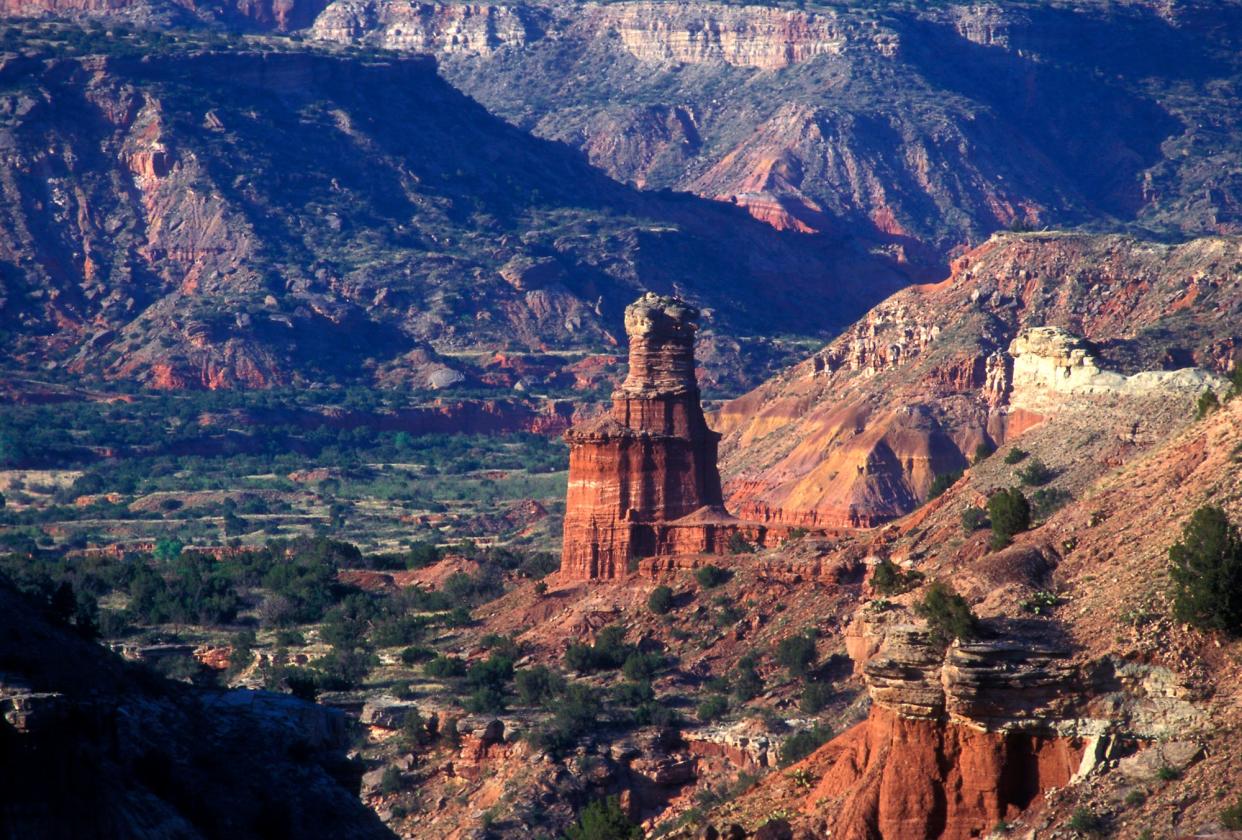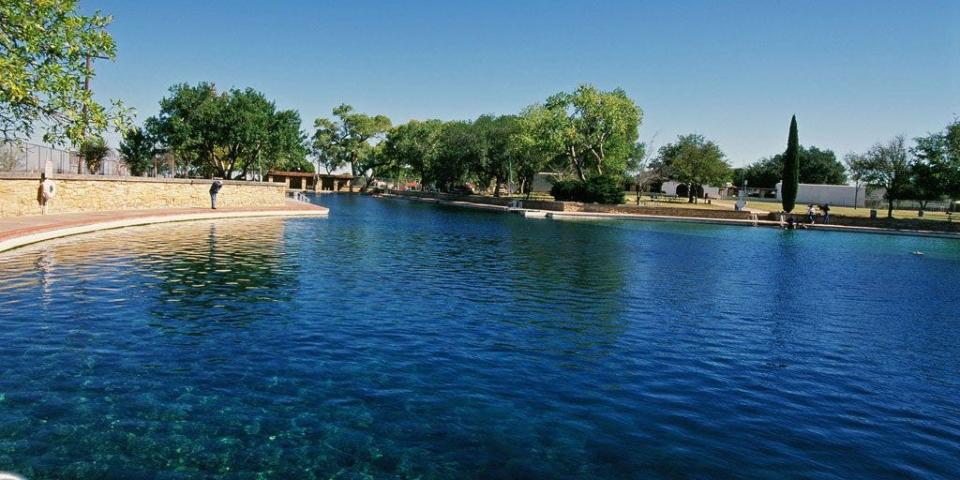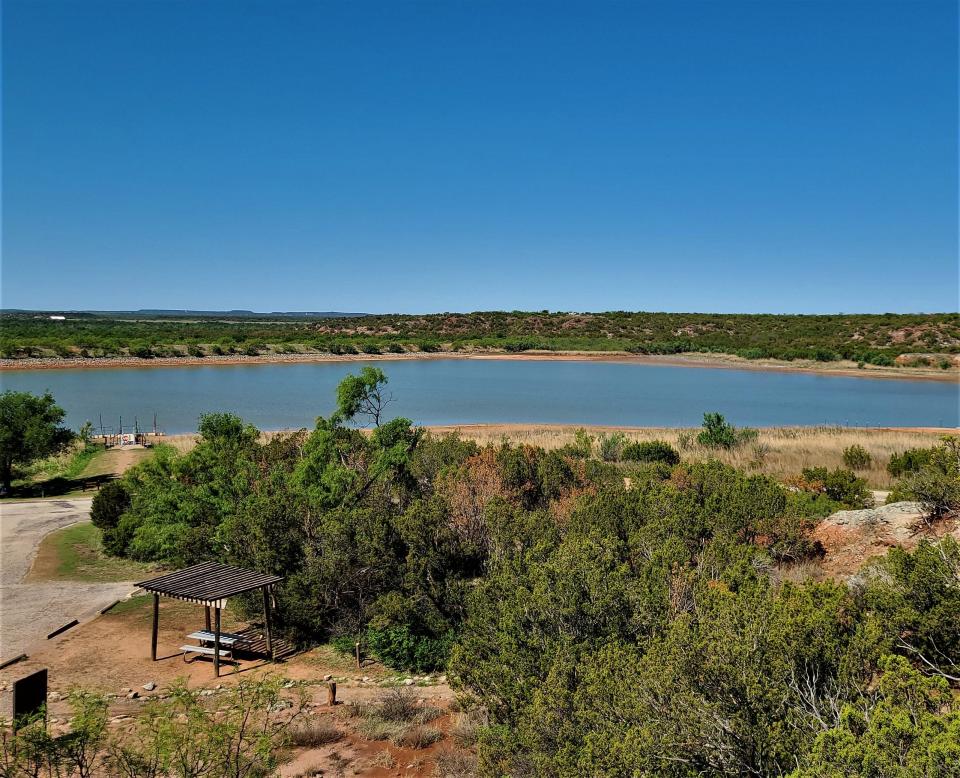Texas State Parks is turning 100. Tell us your favorite Lone Star escape.

I can still smell the campfires.
A good part of my youth was spent hiking, swimming, camping, canoeing and pursuing other outdoor activities. What better way to entertain six curious and rambunctious Barnes kids than to load us into the station wagon; strap some gear onto the luggage rack; and head to the nearest state park?
I spent just as much time at Boy Scout camps, which introduced me to the Hill Country by way of pristine El Rancho Cima, soon to become a Hays County park, thanks in part to the efforts of the Nature Conservancy of Texas.
My experiences in this rugged landscape on the Blanco River played a key role in my permanent removal from the Gulf Coastal Plains to the crystal streams, limestone trails and green hills of Central Texas.
State parks have lured me back to nature again and again. And this year, the park system turns 100.
More:Who are the Wends? Find out at one of the best history museums in Texas
In 1923, the state park board of directors met for the first time. Before then, Gov. Pat Neff developed what became Mother Neff State Park, perched on the Leon River southwest of Waco. His mother, Isabella Neff, had donated the original six acres for the park in 1921.
Today, one can explore more than 85 state parks, along with a complement of state forests and natural areas.
The land for a new one, Palo Pinto Mountains State Park, was showcased for the media last year in Palo Pinto and Stephens counties. It still needs some improvements before it opens to the public; construction is underway. We can thank the Texas Parks & Wildlife Foundation for that treat; the nonprofit has led the way in raising $9 million to polish the diamond in the rough.
Sad confession: I've never been to Mother Neff, the system's first park. To honor the centennial, however, I vow to visit as many of these jewels as possible, as I continue to explore the state's historical, cultural and gustatory wonders for Think, Texas.
Tell me your favorite state park
So what's your favorite state park? It might be a place with a quiet swimming hole and good fishing. Or a scenic outpost in a spectacular setting. State parks come in all shapes, sizes and genres.
Please send your pick along with a short testimonial to mbarnes@gannett.com. To start the ball rolling, allow me to offer 10 state parks that produced lasting memories for me.
Note that these are not the best state parks. I haven't sampled them all. I've never, for instance, been to enormous Big Bend Ranch State Park, as much as I love the nearby Big Bend National Park.
This year, I've already visited a new one for me, Buescher State Park, off Texas 71 near Smithville, which is under considerable renovation. So I must return once the work is done.
That reminds me, time to purchase an annual Texas State Parks Pass. Don't forget, if you plan on camping or bringing together a large number of people, make reservations in advance.
Huntsville State Park: Winds whistling through the pines
Established: 1956.
Where: Huntsville State Park, 565 Park Road 40 West, Huntsville; tpwd.texas.gov/state-parks/huntsville
Early on, I associated camping across the country with winds whistling through conifers — pines, firs, redwoods, spruces. In Houston, we lived within easy driving distance from the East Texas Piney Woods. Many a Boy Scout weekend placed us at Camp Strake just south of Conroe. Huntsville State Park in Walker County lies deeper into the woods to the north.
More:'Nobody would ever find him': Stephen F. Austin wanted to retire to what is now Austin
There's sweet Lake Raven for boating and plenty of small campsites on 2,083 acres embraced by the Sam Houston National Forest. Hikes here are about short distances, not high elevations. Best experienced in dry, crisp weather.
Garner State Park: Dancing under a bluff
Established: 1941
Where: Garner State Park, 234 RR 1050, Concan; tpwd.texas.gov/state-parks/garner
This park along the Frio River goes way back, as its cabins and community halls attest. Underneath an impressive bluff, the Frio is damned for excellent and, as the river's name suggests in Spanish, chilly swimming. My family would sometimes overnight at Garner in Uvalde County on our way to West Texas. It was a hard place to leave.
The park fills up quickly during the hot months, but there are other overnight options on the Frio before it slips underground into a recharge zone south of the park. I remember hearing the music of dances and parties arranged by older kids and adults while growing up, wishing I could join the festivities.
Palo Duro Canyon: Big drama in a big setting
Established: 1933
Where: Palo Duro Canyon State Park, 11450 Park Road 5, Canyon; tpwd.texas.gov/state-parks/palo-duro-canyon
The second-largest canyon in the country, 121 miles long, deserves at lot more attention. Famously, many visitors approach this huge gap in the Earth's crust from the griddle-flat plains around the communities of Amarillo and Canyon. The first glimpse down into its colorful cleft can be a shock to the system.
More:5 Central Texas day trips perfect for historic holidays
Many a child has been thrilled by the outdoor musical "Texas!" performed with the canyon walls as backdrops. I'm not sure if the historical aspects of the show hold up, but you can't beat the setting. Real history did happen right here. Beware flash floods; there's no easy escape route from deep in the canyon.
Enchanted Rock: Our mythical granite dome
Established: 1978
Where: Enchanted Rock State Natural Area, 16710 RR 965, Fredericksburg; tpwd.texas.gov/state-parks/enchanted-rock
The Nature Conservancy of Texas was also involved in acquiring this striking 425-foot granite dome, or "batholith," in the Llano Uplift region. I could not have been happier with that move in the late 1970s. The hike up the main face is only moderately challenging for the fit. Each year that passes, though, it daunts me a bit more. I hear the rock climbing spots are alluring for those so inclined.
Quite a few legends are associated with this spot that held spiritual significance for Indigenous peoples. This is our version of Australia's Uluru (Ayers Rock). Be prepared: It can get windy up there.
Lost Maples: flaming fall foliage
Established 1979
Where: Lost Maples State Natural Area, 37221 RM 187, Vanderpool; tpwd.texas.gov/state-parks/lost-maples
As soon as this stretch on the upper reaches of the Sabinal River became available for primitive camping, I was there with bells on. I don't sleep on the ground — on purpose — any more. Yet I remain in awe of the natural beauty here, especially in the autumn, when the bigtooth maples, remnants from the glacial era, light up like flames.
More:One of the most amazing sites in Texas is in Waco and it's thousands of years old
Check in advance about the fall foliage, which can vary from year to year. Nonetheless, this is a peak experience year round. And the region is pocked with other natural attractions.
Dinosaur Valley: scientific evidence in a peaceful valley
Established 1972
Where: Dinosaur Valley State Park, 1629 Park Road 59, Glen Rose; tpwd.texas.gov/state-parks/dinosaur-valley
Wading in the gorgeous Paluxy River, you can actually run your hands across the footprints of extinct giant lizards. Yet that is but one miracle for this park near the wonderfully relaxing town of Glen Rose. The hiking is for the most part fairly easy, which is one reason I try to stop there as often as possible, especially with the dogs in tow.
Depending on the water level in the river, the dino tracks are not always visible. It's up to your tastes whether, on the way into or out of the park, you stop at the razzle-dazzle Dinosaur World tourist stop, or the non-scientific Creation Evidence Museum.
Caddo Lake: Is this Texas? Sure is.
Established: 1933
Where: Caddo Lake State Park, 245 Park Road 2, Karnack; tpwd.texas.gov/state-parks/caddo-lake
I dreamed of this park while growing up in Texas and Louisiana. Touted as one of the few natural lakes in Texas, it actually has been altered significantly by man. The pull for visitors is the chance to paddle the lake's sloughs, bayous and ponds haunted by moss-draped trees.
The park is closely associated with the historic river port of Jefferson nearby, as well as Lady Bird Johnson's family, which donated the land for the park. Not ideal during muggy season.

Balmorhea: Dive right in, the water's fine
Established: 1968
Where: Balmorhea State Park, 9207 Texas 17, Toyahvale; tpwd.texas.gov/state-parks/balmorhea
Austinites are rightly proud of Barton Springs, but give some credit to this spring-fed pool — at points 25 feet deep — in a small park at the base of the Davis Mountains. Wide and deep, it offers the swimmer the chance to emerge from under water to be surrounded by a sweeping arid landscape.
Snorkeling reveals a bounty of wildlife below the surface. I try to stop on my way through the mountains to clear my mind and refresh my soul. Like Garner, my family used this park as a way station en route to visit relatives in New Mexico. Stay alert: Oil explorations nearby make Balmorhea lovers nervous.
Davis Mountains: Stout trails and the Indian Lodge Hotel
Established: 1938-1939
Where: Davis Mountains State Park, Texas 118, Fort Davis; tpwd.texas.gov/state-parks/davis-mountains
Tucked up in a crease of the Davis Mountains outside town of Fort Davis, this park offers some of the best hiking around. While not technically mountain climbing, the park's trails still kick my butt.
I've never planned far enough in advance to stay at the CCC-era Indian Lodge Hotel in the park, but have camped here, or stayed in historic hotels in Fort Davis or Marfa. Don't skip the old fort at the base of the mountains, among the best preserved in the American West.

Too much gypsum, but still gorgeous views
Established: 1974
Where: Copper Breaks State Park, 777 Park Road 62, Quanah; tpwd.texas.gov/state-parks/copper-breaks
I am especially fond of this relatively remote state park because it sits above the Pease River, a half-forgotten stream known to some only as the site of some of the last tangles between Native Americans and Anglo-Texans. It's a beautiful, uncrowded place.
For a long time time, I wondered why this scenic river attracted few people and settlements. The question was answered on a Think Texas road trip, when a guide at Copper Breaks explained that the gypsum that naturally shows up in the water makes it unpleasant to drink.
Michael Barnes writes about the people, places, culture and history of Austin and Texas. He can be reached at mbarnes@gannett.com. Sign up for the free weekly digital newsletter, Think, Texas, at statesman.com/newsletters or your USA Today Network Texas news site.
This article originally appeared on Austin American-Statesman: Best Texas state parks: Tell us your favorite to mark centennial year

